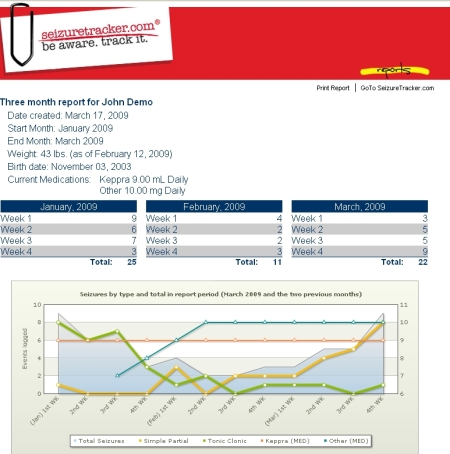April 29th, 2010 by DrWes in Better Health Network, Health Tips, Opinion, Research
Tags: 3D Technology, 3D Television, 3D TV, Altered Vision, Children, Confusion, Convulsions, Damaged Eyesight, Decreased Postural Stability, Disorientation, Dizziness, Eye Strain, Eye Twitching, Family Medicine, Fatigue, General Medicine, Headaches, Internal Medicine, Involuntary Movement, Lightheadedness, Motion Sickness, Muscle Twitching, Nausea, Photosensitive Epilepsy, Primary Care, Samsung Australia, Seizures, Stroke, Teenagers, Vitual Reality
No Comments »

I can’t read for any length of time in a moving vehicle — it makes me nauseous. This is because in order for the body to determine where it is at all times, the brain combines visual information, touch information, inner ear information, and internal expectations to judge its position in space.
Under most circumstances, the senses and expectations agree. When they disagree, there is conflict, and motion sickness can occur. In my case with reading in a car, my eyes that are fixed on the written page tell my brain that I am still. However, as the car goes over bumps and accelerates or decelerates, my inner ear disagrees resulting in my brain activating the nausea center and causing motion sickness.
Well, the same thing might happen with 3D TV. Read more »
*This blog post was originally published at Dr. Wes*
April 29th, 2010 by Felasfa Wodajo, M.D. in Better Health Network, Health Policy, Opinion, Research
Tags: EHR, Electronic Health Record, Family Medicine, General Medicine, Health IT, Health URL, HHS, Internal Medicine, John Halamka, Machine-To-Machine Communication of Medical Information, Medical Technology, Nationwide Health Information Network, NHIN Direct, Office of the National Coordinator, ONC, Personal Health Record, PHR, Primary Care, U.S. Department of Health and Human Services
No Comments »

 Check out John Halamka’s post on some of the excellent work one of the workgroups convened by the feds is doing. Here’s the complete quote:
Check out John Halamka’s post on some of the excellent work one of the workgroups convened by the feds is doing. Here’s the complete quote:
Imagine if every EHR could send data to every other EHR using a simple addressing mechanism like email, a consistent REST implementation or a well described SOAP WSDL. Interoperability would follow rapidly because novel packages of data will be sent to support real business needs without any barriers of how to get the data from endpoint to endpoint.
The “addressing” part of the NHIN (Nationwide Health Information Network) Direct specifications is almost complete. The “implementation” workgroup is part of the fast moving NHIN Direct project which is developing lightweight standards for machine-to-machine communication of medical information. Read more »
*This blog post was originally published at a few thoughts from a tumor surgeon*
April 29th, 2010 by Berci in Better Health Network, Health Tips, Opinion, Research
Tags: Anti-Epileptic Medications, e-Tool, Epilepsy, Epileptology, Internal Medicine, Online Health Management, Online Seizure Log, Seizures, SeizureTracker.com, Track Epilepsy Online, Tracking Health Parameters
No Comments »

 I’ve written about several sites that let users track parameters related to their health management.
I’ve written about several sites that let users track parameters related to their health management.
Here’s another example, SeizureTracker.com, that tracks seizure activity, appointments, and medication schedules through a simple calendar interface. You can download printable seizure logs or receive customized reports which include graphs comparing seizure activity and medication dosages. Read more »
*This blog post was originally published at ScienceRoll*
April 29th, 2010 by Steve Novella, M.D. in Better Health Network, Health Policy, Opinion, Research
Tags: Andrew Wakefield, Anti-Vaccine, Bad Science, Big Pharma, Big Pharma Conspiracy Theorists, Conspiracy-Mongering, Cymbalta, Drug Company, Evidence-Based, FDA, Fibromyalgia, Food and Drug Administration, Harriet Hall, Historical Revisionism, Internal Medicine, Inventing Diseases, Legitimate Diseases, Lyrica, Martha Rosenberg, MMR Vaccine, Osteopenia, Pharmaceutical Executive, Pharmaceutical Industry, Pharmacology, Popular Diagnosis, Savella, Science Based Medicine, Scientific Validity, Thimerosal, Treatment Resistant Conditions
1 Comment »

To be blunt up front –- SBM is not apologetic about the pharmaceutical industry. We get zero funding from any company, and have no ties of any kind to “big pharma.” In today’s world I have to spend time making that clear, because despite the reality critics are free to assume and falsely claim that our message is coming straight from the bowels of hell (a.k.a. the pharmaceutical industry).
We promote science-based medicine and criticize pharmaceutical companies along with everyone else when they place other concerns ahead of scientific validity, or promote bad science, for whatever reason.
It has become fashionable, however, to not only criticize the pharmaceutical industry but to demonize them –- and the term “big pharma” has come to represent this demonization. Cynicism is a cheap imitation of skepticism –- it is the assumption of the worst, without careful thought or any hint of fairness. Read more »
*This blog post was originally published at Science-Based Medicine*
April 28th, 2010 by StaceyButterfield in Better Health Network, Humor, Opinion, True Stories
Tags: Becoming A Doctor, Becoming An American, Cultural Differences, Family Medicine, Garrison Keillor, General Medicine, IMGs, Internal Medicine, International Medical Graduates, Lake Wobegon, Medical Students, National Public Radio, NPR, Primary Care, U.S. Medical Practice, Vijay Rajput FACP
No Comments »

I [recently] attended a fascinating session offering advice to international medical graduates (IMGs) on how to fit in and succeed in U.S. medical practice. Here’s a slightly-silly example of the kind of cultural differences that can cause confusion for IMGs:
Speaker Vijay Rajput, FACP, started to make a point using the good-old analogy of Lake Wobegon. Then he paused and asked how many attendees knew about Lake Wobegon. Only two raised their hands.
“That’s the problem right there,” he said, only half-jokingly. “You need to be listening to NPR!”
Clearly it takes a lot to become an American and a doctor at the same time.
*This blog post was originally published at ACP Internist*




 Check out John Halamka’s
Check out John Halamka’s 










